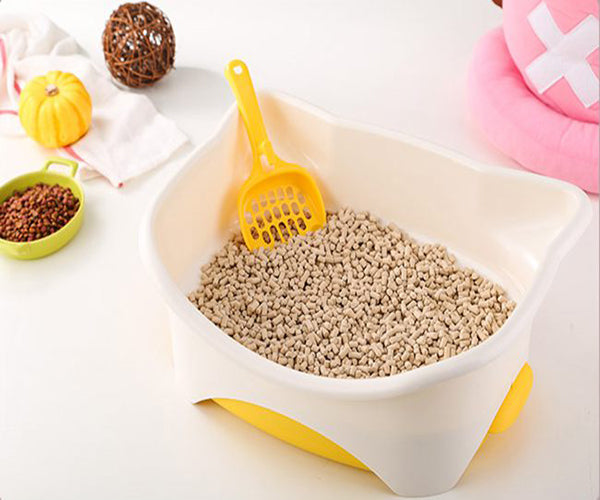
How to choose a litter box?
When choosing a litter box, there are several factors to consider to ensure your cat's comfort and health. Here are some key points to choose from:
1. Size and shape
Size: The litter box should be spacious enough for the cat to comfortably turn around and dig the litter. The length of the litter box should be at least 1.5 times the length of the cat's body, and the width should be as far as the cat's "nose to bottom". In terms of height, for most adult cats, a height of 12 to 30 cm is appropriate, but also consider the ease of access for the cat. For young or elderly cats, it may be necessary to choose a lower litter box.
Shape: The common shapes of the litter box on the market are rectangular, round and oval. Shape is not the most important thing for cats, the key is to make sure the litter box is the right size. However, the four corners of the litter box should be smooth "rounded corners" to avoid causing injury to the cat.
2. Material
The material of the litter box should be soft and flexible, so that the cat will feel more comfortable when using it. Common materials include plastic, ceramic and wood. Plastic litter boxes are lightweight and easy to clean, but may not be durable enough; Ceramic litter boxes are more durable and stable, but the price is relatively high. Choose the right material according to your personal preference and budget.
3. Import and export design
The inlet and outlet design of the litter box should be easy for the cat to enter and exit. For young or old cats, low entrances and exits are more suitable. Some litter boxes also come with LIDS or privacy covers to provide better privacy and reduce odors. However, it is important to note that the design of the lid or privacy cover should not affect the ease of access for the cat.
4. Antibacterial and deodorant function
Some litter boxes have an antibacterial coating or deodorization function, which helps reduce bacteria growth and odors. These functions are important for maintaining litter box cleanliness and environmental hygiene. These features are especially important for odor-sensitive cats or family members.
5. Easy cleaning
The litter box should be easy to clean and maintain. Consider whether the surface texture and design of the litter box is easy to remove litter residue and urine. Some litter boxes have removable parts for easy cleaning and litter replacement. Choosing a litter box that is easy to clean can greatly reduce the workload of the pooper.
6. Consider a multi-cat household
If you have multiple cats, you need to consider choosing a litter box suitable for multiple cats. This may mean choosing a larger litter box, or choosing multiple litter boxes scattered in different areas to avoid fighting and conflict. Every cat should have their own private space to use the litter box.
7. Security
Ensure that the edges of the litter box are smooth and free of sharp corners to prevent injury during use. At the same time, check that the structure of the litter box is stable to avoid accidents such as rollover when the cat is in use.
8. Budget
Finally, choose the right litter box for your budget. Litter boxes are available in a variety of price ranges, from affordable open litter boxes to high-end, fully automated litter boxes. Choose a cost-effective litter box based on your budget constraints and your cat's needs.
To sum up, when choosing a litter box, it is necessary to consider many factors such as size, shape, material, import and export design, antibacterial and deodorant function, easy cleaning, multi-cat family needs, safety and budget. By taking these factors into account, you can choose a litter box that is comfortable, hygienic and suitable for your cat's needs.
